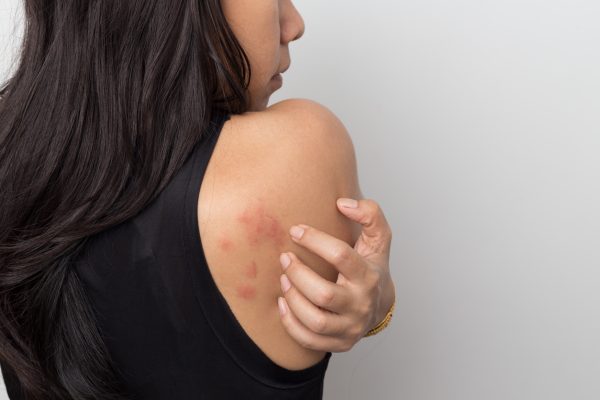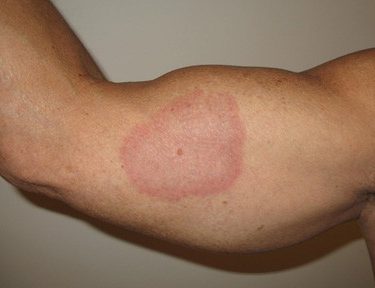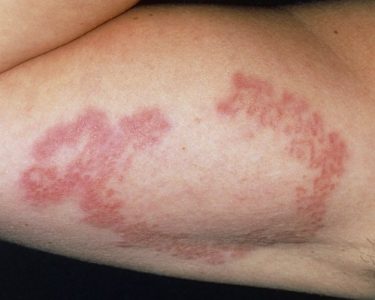Granuloma Annulare Diet
Eating a well-balanced diet is one of the most important steps in managing granuloma annulare. Granuloma annulare is a rare skin condition that causes raised, red rings or bumps to appear on the skin. It usually occurs on the hands and feet but can also be found on the forearms, lower legs, and trunk. Although there is no known cause for granuloma annulare, research suggests that certain dietary elements may play a role. Understanding what foods to include and avoid in your diet can help manage this condition.
A healthy granuloma annulare diet should include whole grains, such as oatmeal or brown rice; lean proteins, such as fish or chicken; plenty of fruits and vegetables; and healthy fats like olive oil or avocado. These foods provide essential vitamins and minerals that support skin health as well as overall health. Additionally, eating a variety of different colored vegetables gives your body an array of phytonutrients (antioxidants) that are beneficial for fighting inflammation.
It’s also important to limit your intake of processed foods and refined sugars. These types of foods are highly inflammatory which can worsen granuloma annulare symptoms. Fried foods such as French fries or potato chips should also be avoided as they contain trans fats which can lead to increased inflammation throughout the body.
In addition to making dietary changes, drinking plenty of water is essential for supporting skin health. Water helps flush out toxins from the body while also keeping the skin moisturized from within – an important factor in managing granuloma annulare symptoms. Aim for at least 8 glasses (64 ounces) per day.
Types of Foods to Include in a Granuloma Annulare Diet
Granuloma annulare is an inflammatory skin condition that causes bumps on the skin. It’s usually harmless but can be unsightly and uncomfortable. A granuloma annulare diet is important for helping to reduce the symptoms associated with this condition. Eating certain foods that are rich in nutrients can help improve the health of your skin, reduce inflammation, and reduce the appearance of granuloma annulare. When it comes to a granuloma annulare diet, there are several types of foods you should include to get the most benefit from your meals. Here are some healthy options:
Fruits: Fruits contain vitamins and minerals that can help promote healthy skin. Try incorporating apples, oranges, bananas, blueberries, strawberries, and other berries into your diet.
- Vegetables: Vegetables provide essential nutrients for healthy skin cell growth and repair. Incorporate spinach, kale, cauliflower, broccoli, Brussels sprouts, peppers, onions, squash and tomatoes into your meals.
- Whole grains: Whole grains like oats and quinoa provide complex carbohydrates that can help keep your energy levels steady throughout the day. Additionally they contain beneficial fiber which helps with digestion.
- Fish: Fish is a great source of protein and fatty acids which can help protect against inflammation. Consider adding salmon or tuna to your diet for maximum benefits.
- Nuts/Seeds: Nuts such as almonds or walnuts are rich in antioxidants which can boost immunity and help protect against disease-causing agents such as viruses or bacteria.
- Legumes: Legumes such as beans or lentils offer plant-based proteins which have been shown to reduce inflammation levels in people suffering from granuloma annulare.
Potential Health Benefits of Following a Granuloma Annulare Diet
Granuloma annulare is a chronic skin disorder that can cause rashes and circles or clusters of lesions. There is no known Cure for Granuloma annulare skin condition, but it may be managed with medication and lifestyle changes including following a granuloma annulare diet. This kind of diet is based on certain principles that can help to reduce inflammation in the body and improve the overall health. The potential health benefits of following a granuloma annulare diet can include better digestion, stronger immune system, lower risk of chronic diseases, improved blood circulation, and more.
Boosted Immune System
A balanced granuloma annulare diet is key to improving one’s immune system health. Eating foods that are rich in antioxidants like fruits and vegetables helps combat free radicals that can weaken the immune system. Eating foods with anti-inflammatory properties such as omega 3 fatty acids, found in fish oil supplements or seafood like salmon, also assists in reducing inflammation throughout the body and strengthening the immune system. Additionally, avoiding refined sugars and processed foods can boost immunity as these foods do not provide any essential nutrients needed for natural healing processes.
Lower Risk of Chronic Diseases
Another potential benefit of following a granuloma annulare diet is a reduced risk of developing chronic diseases such as diabetes or heart disease. Eating fresh fruits and vegetables provides essential vitamins and minerals which helps to keep the body functioning optimally and at its best. Staying away from processed foods that are high in saturated fats also reduces the risk of developing chronic diseases since these types of food are not easily broken down by the body’s digestive system. Rather than consuming unhealthy snacks full of empty calories it is better to opt for healthy snacks such as nuts, seeds or fruit instead.
Improved Blood Circulation
Following a granuloma annulare diet with an emphasis on incorporating fresh produce into meals helps maintain healthy blood circulation throughout the body since they contain essential nutrients that help keep blood vessels functioning properly. Fruits like apples and oranges are high in potassium which helps regulate blood pressure while leafy greens like spinach contain Vitamin K which aids in proper clotting. In addition to this specific nutrient profile, eating whole grains including quinoa or oats helps increase good cholesterol levels while reducing bad cholesterol which contributes to improved cardiovascular health.
Tips for Adhering to a Granuloma Annulare Diet
A granuloma annulare diet is an important part of managing the skin condition. Following a diet that avoids foods and beverages that can irritate the skin can help bring relief from symptoms and improve the quality of life. But committing to a granuloma annulare diet can be challenging. Here are some tips for adhering to such a diet:
Create a Menu Plan
Creating a menu plan for meals and snacks will make it easier to stick with a granuloma annulare diet. Start by writing down food items that are allowed on the diet, such as lean proteins, healthy fats, colorful vegetables, fruit, whole grains, legumes, nuts and seeds. Then plan your meals based on these items and have them ready ahead of time. Planning ahead helps in avoiding processed foods or foods that may trigger flare-ups.
Stay Hydrated
Staying hydrated is essential for good health – even more so when following a granuloma annulare diet. Drinking plenty of water helps flush toxins out of the body and keeps you feeling energized throughout the day. Make sure to fill up your water bottle throughout the day and don’t forget to add some flavor with natural fruit juices or herbal teas.
Prepare Your Own Meals
Many restaurants serve food that includes ingredients not suitable for those on a granuloma annulare diet. To make sure you’re eating only what’s beneficial for you, prepare your own meals at home using fresh ingredients without preservatives. This way you’re in control over what goes into your food.
Keep Healthy Snacks Handy
Having snacks handy makes it easier to stay on track with your granuloma annulare diet. Keep some healthy snacks like fruits or nuts at work or in your car so you don’t reach out for unhealthy options when feeling hungry.




